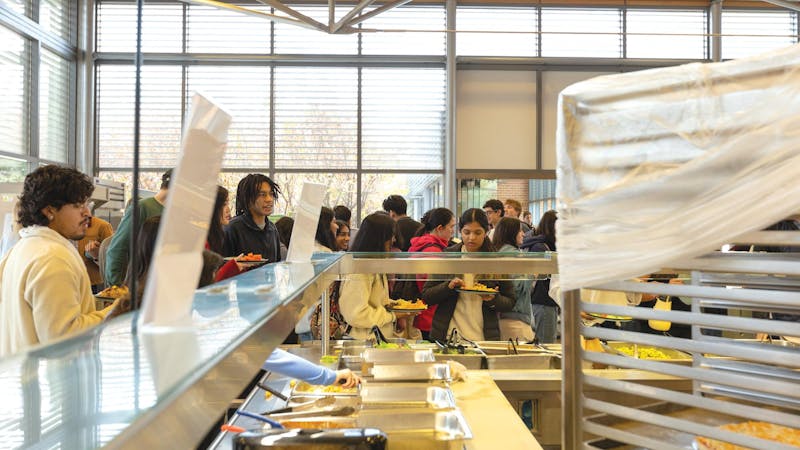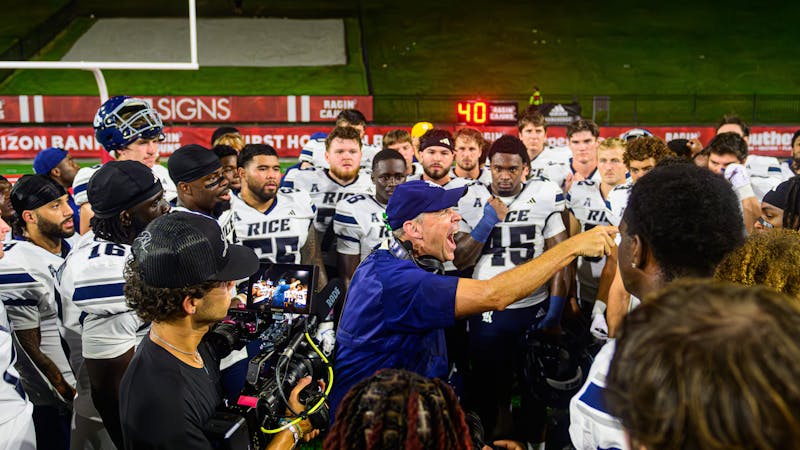Grits and gesundheit: Government partly at fault for tuition hikes
Americans tend to link a college education to financial success. Sometimes I wonder whether a college education is worth the price we pay, or, to put it in the language of economics majors, if what we pay in time and money is an economically efficient use of resources. While politicians, interest groups and certain segments of society accuse and condemn oil companies and pharmaceutical enterprises of price gouging, it always strikes me as odd that colleges and universities are able to escape such criticism.The net price of college tuition in the United States has consistently been rising at a rate far faster than inflation. In the last five years, the cost of four-year colleges rose 31 percent above the general inflation rate. A press release published by the House Democrats in 2006 pointed out that since the year 2001, tuition at public universities has increased by $2,000 (or 57 percent) and at private universities by $5,000 (32 percent).
The increase in the price of oil has nothing on the skyrocketing price of higher education. Dan Lips of the Maryland Public Policy Institute compared the cost of college tuition with the price of gasoline from 1986 to 2006. In that time frame, after adjusting for inflation, tuition and fees rose 122 percent at public universities rose and rose 80 percent at private universities. I feel it is safe to say that this is a rather large increase. Lips further calculated that the real cost of a gallon of gasoline increased from $1.58 in 1986 to $2.50 in 2006, and if the price of gasoline had risen at the same rate as college tuition, consumers would have been pumping gasoline at $3.51 a gallon instead.
As college students we all face this reality as we watch thousands of our dollars slip out of our accounts and into the hands of the university cashier. What is causing this drastic increase in price? Despite the numerous conspiracy theories propagated by those hostile to capitalism, the high price of gasoline is primarily due to market forces. The rise in college tuition, on the other hand, has some other factors at work.
To be sure, demand for college education is on the rise; more Americans are attending secondary schools than ever before. Further, there is increased competition for good faculty, and the fast pace of technological advancement has required consistent university spending to keep systems current. Such factors alone cannot, however, explain the massive price escalation. In a different response than their reaction to oil prices, the government is enabling these institutions to continue raising their costs by way of federal subsidies. The College Board reports that from 2005-'06, total federal college aid amounted to $94 billion. This represents a 95 percent increase in aid since 1995, after adjusting for inflation. Far from solving the problem, the government's money-dumping is merely serving to aggravate it.
Federal aid allows for colleges to continue raising the price of their product with less consumer outcry. With a less elastic demand, colleges feel a minimized need to lower their prices to compete in the market. Ohio University economist Richard Vedder put it well: "Students receiving grants or subsidized loans are far less sensitive to tuition increases than they would be if they were paying their own way." Vedder argues "where entrepreneurs in a free, unsubsidized market seek to cut costs and lower their prices to lure new customers away from businesses that are raising theirs, there is very little of that in higher education."
Although the presence of third party payers causes price increases, access to higher education ought not be exclusive to the wealthy. Yet, while the government allows those who would otherwise be absolutely unable to pay the opportunity to attain a degree, the College Board reports that "changes in student aid policies have benefited those in the upper half of the income distribution more than those in the lower half." Ironically, the majority of those footing the bill for such student aid, i.e. the taxpayers, do not have a college diploma. In fact USA Today reported that only 29 percent of Americans can lay claim to an undergraduate degree. As Lips wrote, these taxpayers are "subsidizing students from upper- and middle-income families, who can go on to expect far higher lifetime earnings."
All who have shown commitment, talent and merit ought to be given an opportunity to attain a college degree and strive to reach their highest potential. This being the case, colleges must remain accountable for the prices they charge, and the government ought not to act as an accomplice, allowing colleges to continue to squeeze their students' wallets seeking to extract every last drop.
Caroline May is a Will Rice College junior.
More from The Rice Thresher

Over 1,000 students petition against new meal plan
When Konstantin Savvon opened the Housing and Dining email announcing the new unlimited meal plan, he was instantly concerned about the impact on off-campus students like himself.

Rice football wins season opener under new coach
For the first time since 2018, Rice football opened its season with a victory. Scott Abell was soaked with yellow Powerade following a 14-12 win on the road Saturday against the University of Louisiana at Lafayette, which won 10 games and made it to the Sun Belt Conference championship last season.

Acting like an athlete: Rice basketball alum takes on Broadway
Underneath Chadd Alexander’s Broadway costume, there’s ankle tape and wrist braces — same protective gear he wore as a walk-on basketball player at Rice, though now he’s performing eight shows a week in the ensemble of “Harry Potter and the Cursed Child” instead of running conditioning drills in Tudor Fieldhouse.

Please note All comments are eligible for publication by The Rice Thresher.